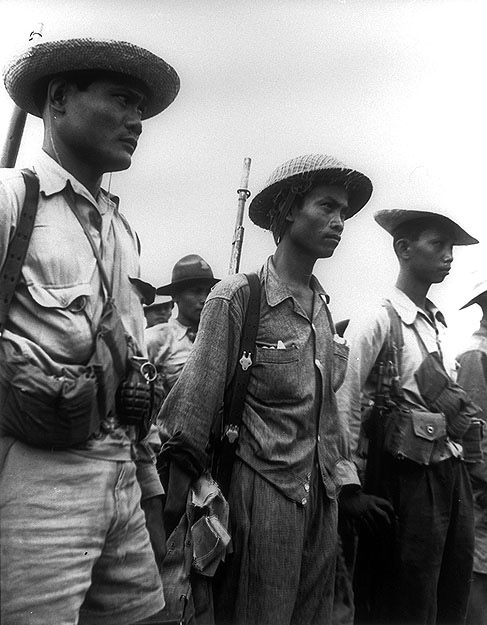Wwii At Home On Flowvella
Despite the obstacles presented by segregation and discrimination, the war economy offered possibilities to minorities that had previously been unimaginable.  Many Americans – and African Americans in particular – were able to relocate to other parts of the country for better jobs and new opportunities. Had come to Sacramento from Coffeyville, Kansas, just one of some eight million Americans who migrated to the Pacific coast during the war in search of defense jobs. “I realized that if I stayed at home, of course I’d probably finish my schooling, but I’d probably end up working in some white woman’s kitchen or something,” Green remembered.
Many Americans – and African Americans in particular – were able to relocate to other parts of the country for better jobs and new opportunities. Had come to Sacramento from Coffeyville, Kansas, just one of some eight million Americans who migrated to the Pacific coast during the war in search of defense jobs. “I realized that if I stayed at home, of course I’d probably finish my schooling, but I’d probably end up working in some white woman’s kitchen or something,” Green remembered.
Slogans like 'Digging for Victory' and 'Make Do and Mend' appeared on national posters and became a part of the war effort. The city environment made these efforts nearly negligible. In the more remote country villages, however, clandestine slaughtering, vegetable gardens and the availability of milk products permitted better survival. The official ration provided starvation level diets of 1,300 or fewer calories a day, supplemented by home gardens and, especially, black market purchases.
In those countries fighting World War II, resources were diverted from domestic uses to military uses. The domestic workforce also fell, and even though women filled some of the openings left by those who went into the military or into war production jobs, domestic production fell as well. After 70 years, a fallen WWII Navy pilot finally returns home to Nashville. A Nashville family finally laid to rest the fallen WWII soldier they have been fighting for 70 years to bring home. Authorities discovered a cache of World War II-era weapons in a Brooklyn home Wednesday morning, law enforcement sources said. Acting on a tip, police executed a search warrant at the 900-square.

At Home Store Locations
With a view of building up the economic base of the, the Japanese Army envisioned using the islands as a source of agricultural products needed by its industry. For example, Japan had a surplus of sugar from Taiwan, and a severe shortage of cotton, so they try to grow cotton in on sugar lands with disastrous results. They lacked the seeds, pesticides, and technical skills to grow cotton. Jobless farm workers flock to the cities, where there was minimal relief and few jobs. The Japanese Army also tried using cane sugar for fuel, castor beans and copra for oil, derris for quinine, cotton for uniforms, and abaca (hemp) for rope. The plans were very difficult to implement in the face of limited skills, collapsed international markets, bad weather, and transportation shortages. The program was a failure that gave very little help to Japanese industry, and diverted resources needed for food production.
Pier 1 Imports
It was under Japanese army control and performed poorly in combat. Its members were captured Indian soldiers from British Indian Army who gained release from extreme conditions in POW camps by joining the Japanese-sponsored INA. It participated in Battle Of Kohima and Battle of Imphal.
Food supplies were very tight before the heavy bombing began in fall 1944, then grew to a crisis. There was only a small increase of 1.4 million women entering the labor force between 1940 and 1944. The minister of welfare announced, 'In order to secure its labor force, the enemy is drafting women, but in Japan, out of consideration for the family system, we will not draft them.' Japanese schoolchildren evacuating to rural areas in 1944 The weaknesses in the maximum utilization of womanpower was indicated by the presence of 600,000 domestic servants in wealthy families in 1944. The government wanted to raise the birthrate, even with 8.2 million men in the armed forces, of whom three million were killed. Government incentives helped to raise the marriage rate, but the number of births held steady at about 2.2 million per year, with a 10% decline in 1944–45, and another 15% decline in 1945–46. Strict rationing of milk led to smaller babies.
Executive Order 9066 was the offshoot of a combination of wartime panic and the belief on the part of some that anyone of Japanese ancestry, even those who were born in the U.S., was somehow capable of disloyalty and treachery. As a result of the order, nearly 120,000 Japanese Americans were dispatched to makeshift “relocation” camps.Despite the internment of their family members, young Japanese-American men fought bravely in Italy, France and Germany between 1943 and 1945 as members of the U.S. Vrste vsebine client security for mac. Army’s 100th Battalion, 442nd Infantry. By the end of the war, the 100th had become the most decorated combat unit of its size in Army history. Baseball and the Battlefield In January 1942, Kenesaw Mountain Landis (1866-1944), the national commissioner of baseball, wrote a letter to President Roosevelt in which he asked if professional baseball should shut down for the duration of the war. In what came to be known as the “green light” letter, Roosevelt responded that professional baseball should continue operations, as it was good for the country’s collective morale and would serve as a needed diversion.